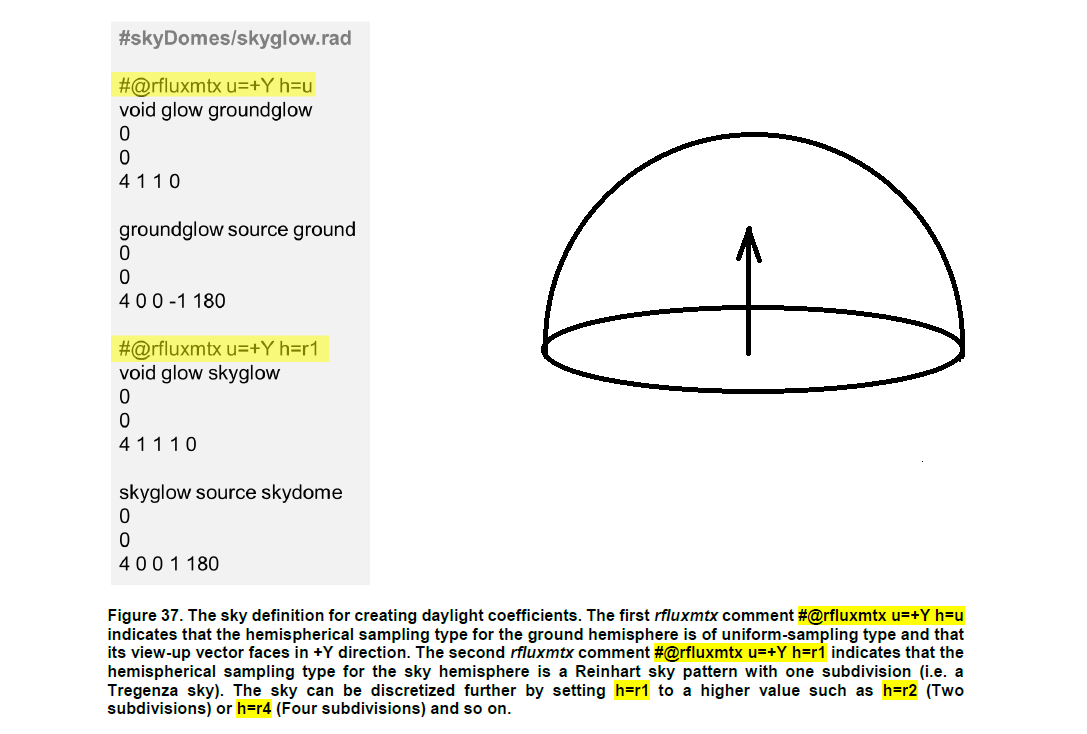What is the "up" direction defined by -u for the sample hemisphere of the rfluxmtx program
In the tutorial Daylighting Simulations with Radiance using Matrix-based Methods (pp. 42), the "view-up" vector of the rfluxmtx hemispherical sampling is set to +Y direction, as in the figure below.
To my understanding, the window of the room model is facing the negative Y direction, which is the "south" direction in Radiance. Then, why is the sampling hemisphere taken to the positive Y direction here? In other words, shouldn't the sampling rays be shot into the negative Y directions to get the daylight matrix?
How to understand the definition of the "view-up" vector?
 .
.





